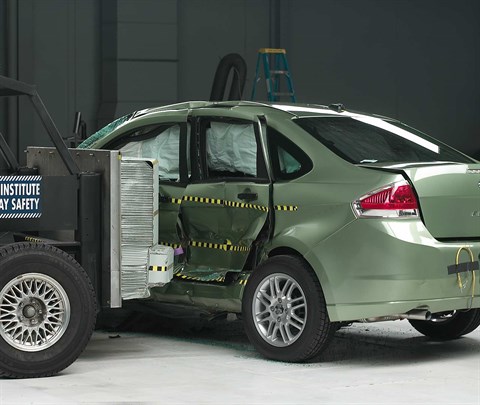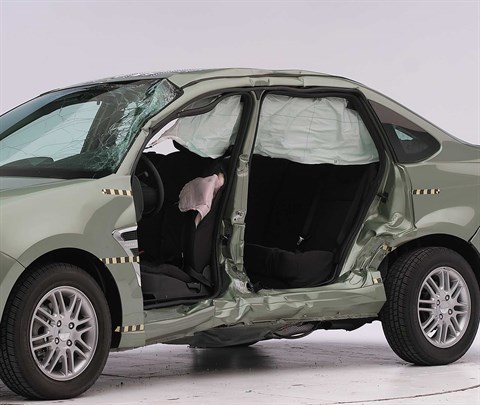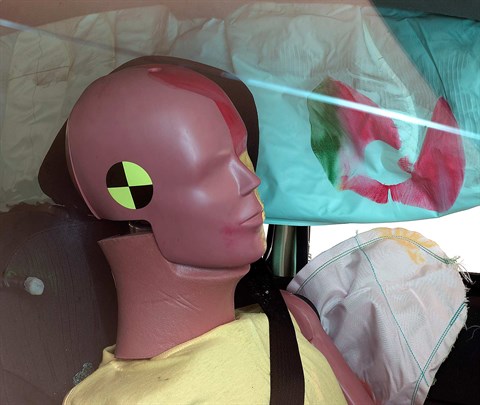Moderate overlap front: original test
Rating applies to 2008-11 models
Tested vehicle: 2008 Ford Focus SE 4-door
The Ford Focus was restyled for the 2008 model year, and the restraint system (airbags and seat belts) was modified. In addition, side airbags were made standard (they had been optional in earlier models). Frontal ratings are assigned by the Institute based on a test conducted by Ford. However, because there were no significant front structural upgrades, the structural rating of the current model is based on both Ford's test and the Institute's test of a 2000 model.
| Evaluation criteria | Rating |
|---|---|
| Overall evaluation | |
| Structure and safety cage | |
| Driver injury measures | |
| Head/neck | |
| Chest | |
| Leg/foot, left | |
| Leg/foot, right | |
| Driver restraints and dummy kinematics | |
Side: original test
Rating applies to 2008-11 models
Tested vehicle: 2008 Ford Focus SE 4-door with front and rear head curtain airbags and front seat-mounted torso airbags
The Ford Focus was restyled for the 2008 model year, and changes were made to the side structure to improve occupant protection in side impact crashes. In addition, the side airbag design was changed and they were made standard (they had been optional in earlier models).
| Evaluation criteria | Rating |
|---|---|
| Overall evaluation | |
| Structure and safety cage | |
| Driver injury measures | |
| Head/neck | |
| Torso | |
| Pelvis/leg | |
| Driver head protection | |
| Rear passenger injury measures | |
| Head/neck | |
| Torso | |
| Pelvis/leg | |
| Rear passenger head protection | |

View of the vehicle and barrier just after the crash test.

View of the vehicle after the crash with doors removed, showing the side airbags and damage to the occupant compartment.

Smeared greasepaint shows where the driver dummy's head was protected from being hit by hard structures by the side airbags.

Smeared greasepaint shows where the rear passenger dummy’s head was protected by the side airbag.
Head restraints & seats
Seat type: Manual cloth seats
| Overall evaluation | |
|---|---|
| Dynamic rating | |
| Seat/head restraint geometry |
About the head restraint & seat test
Currently, IIHS tests apply only to front seats.
